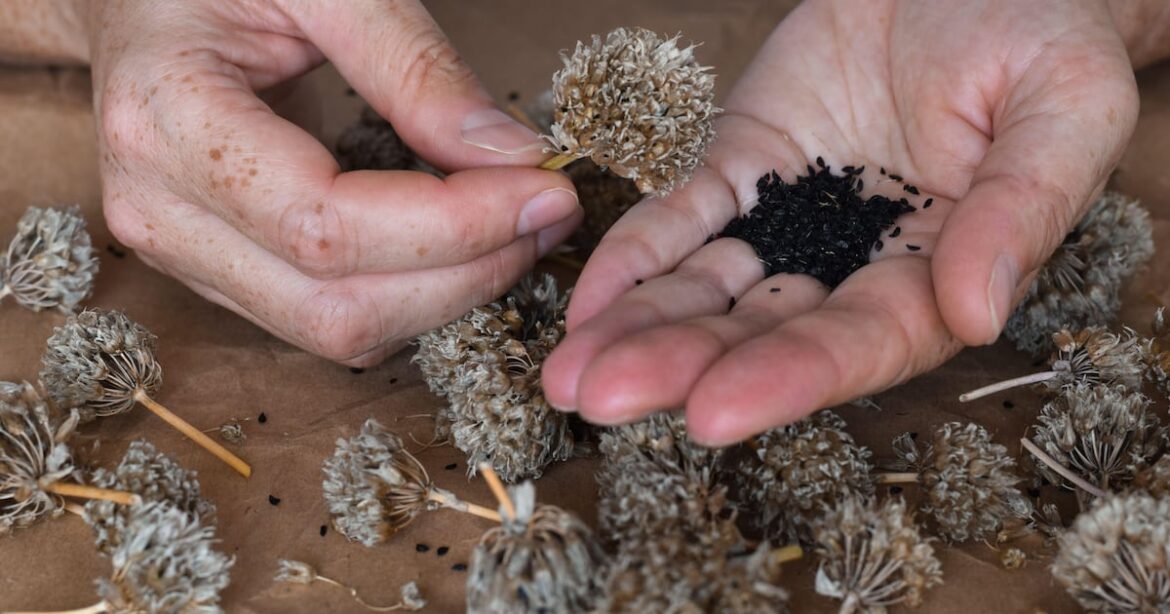If you’ve seen your garden flowers turning brown, it may be time to start collecting the seeds to give you more plants for free next year.
Collecting seeds from lavender, foxgloves, honesty, wallflowers, poppies, sweet peas and Nigella damascena (Love-in-a-mist) is so easy and can save you a lot of money, says garden influencer Anya Lautenbach (@anya_thegarden_fairy), author of a series of books for the budget-conscious gardener including The Money-Saving Gardener.
“Seeds are like treasure,” she enthuses. “They have to ripen on the plant so you can’t speed up the process. You can’t collect seedheads when they are green – you have to wait for that moment to happen.”
Don’t forget perennials, which may also be ripe for seed collection, she continues.

“A lot of them will produce seeds in late summer and autumn. For example, I grew some great delphiniums and astrantias from seeds, which will perform year after year.”
How can you tell if a seed is ready to be harvested?
Flowers should have turned brown. “Take a brown flower and just shake it and see if the seeds fall,” she suggests. When the seedhead opens you can see that the seeds can easily be shaken out, she explains.
Is there an easy way to collect the seeds?
 (Alamy Stock Photo)
(Alamy Stock Photo)
“Put a paper bag under the seedheads and shake them or cut off the whole stem in the paper bag and hang it upside down in a cool, dark place, especially if the seeds are microscopic.
“Gardeners can put their hand under the flower after it has turned brown and gently rub the flower. When they are ready, the seeds will easily be removed,” she offers.
Separate the seeds from other debris (known as chaff) by sieving them. Some seeds benefit from being sown straight away, such as delphiniums, clematis and anemones, while others should be stored for winter or spring sowing.
When is the best time to collect seeds?
“With many plants, late summer and early autumn are the best times,” she says. “This is when everything is ripening. Some plants need the whole season for their seeds to ripen. Erigeron (Mexican daisy) produces seeds on a daily basis. Yet they are quite expensive to buy.”
Foxgloves and lavender seeds should be ready to harvest, as should honesty, she adds.
“Honesty seed cases look like silver coins. You will see the seeds on this plant inside the papery seed cases.”
Is weather a factor?
“Yes. The best time to collect seeds is when it’s dry, in the middle of the day, not after rain and not in the morning because the seedheads are still damp. Collect them on a warm, dry day.”
How do you store them?
 (Alamy Stock Photo)
(Alamy Stock Photo)
“Store them somewhere dry and cool, but you don’t have to create special conditions. I grew a whole garden from seed and stored all of them under my stairs in the house, not in special conditions.”
Ideally, store them in paper bags or something which allows air circulation, not a plastic tub with a lid, she recommends.
How long will they keep?
“After two years they usually start underperforming, so the rate of germination will be lower. I usually start them off straight away or keep them for the next season, so I’d say they last about a year.”
Will they produce identical plants?
Some seeds won’t come back true, because a lot of them are cross-pollinated, she observes. But others, such as honesty and Lychnis coronaria will come true to type so you will get plants that are identical to the parents.
Are plants grown from home-harvested seed superior?
“Based on what I have done, the plants that were born in my garden from seed are more resilient, especially the ones that self-seed. From the moment they have germinated they are exposed to my conditions.
“If I buy a plant that has been artificially grown somewhere, especially not in this country, and then I bring it into my garden, it might not perform as well as the one that I grew myself from seed,” she says.


Comments are closed.